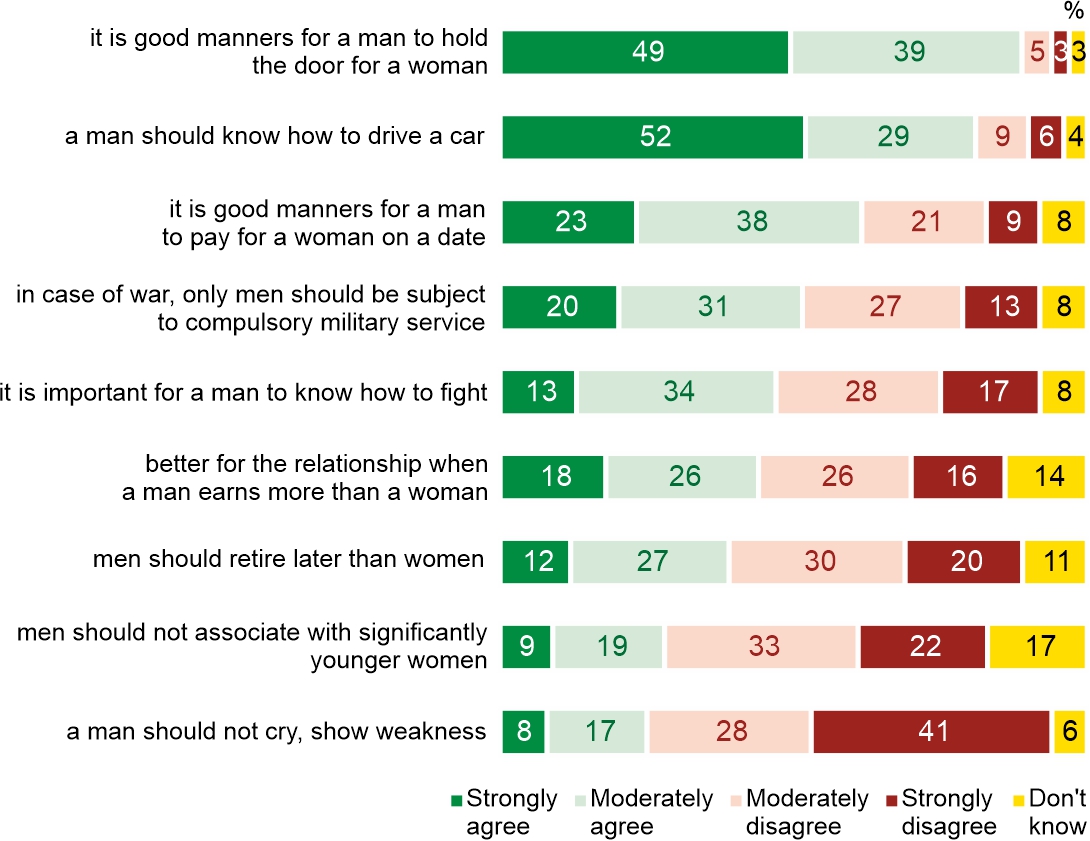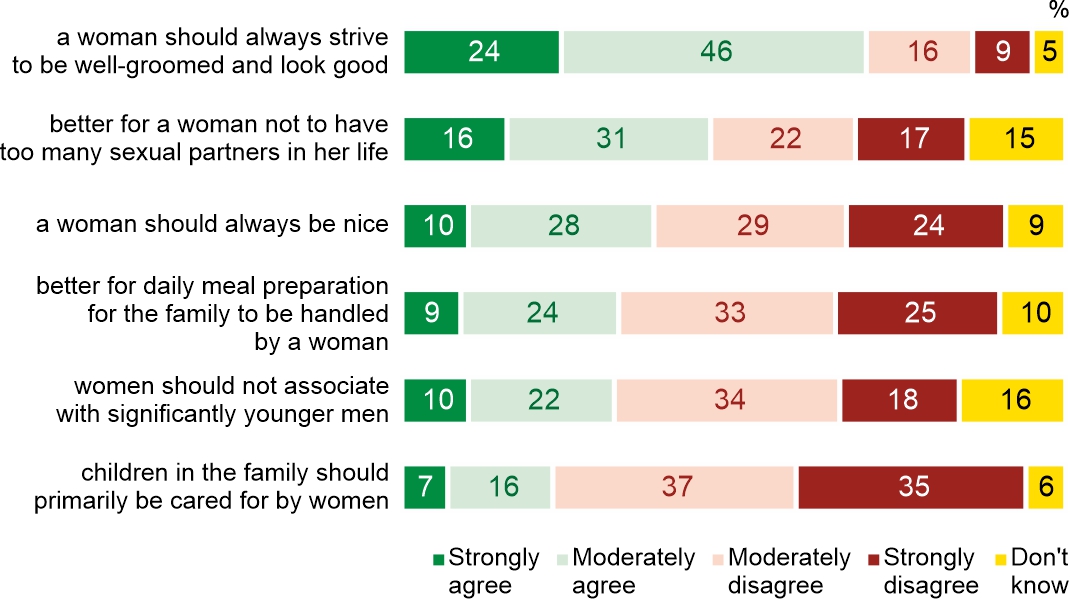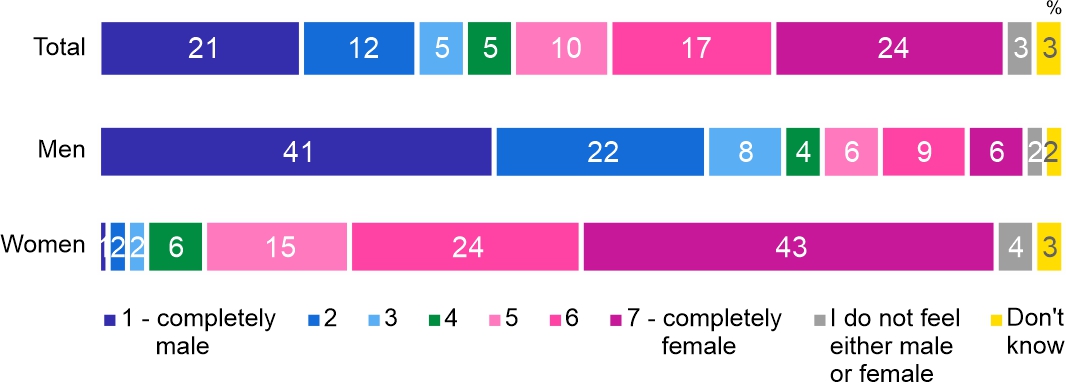Young Poles on masculinity, femininity and gender differences
Author: Jonathan Scovil
|
2025-06-03
In the next part of our study, we investigated young Poles' attitudes toward traditional gender roles and differences, as both millennials and Generation Z grew up during a period of intense social changes associated with Poland opening up to Western influences. When we asked them to respond to a set of statements describing traditional masculinity patterns, the most support was found for those requiring men to show courtesy toward women, such as holding doors open (88%) or paying for them on dates (61%), and the ability to drive a car (81%). Opinions were divided regarding systemic inequalities affecting men, such as mandatory military service in case of war (51% in favour, 40% against) or later retirement age (39% in favour, 50% against). The greatest divisions were triggered by statements describing the traditional male pattern as someone who should be able to fight (47% in favour, 45% against) and earn more than his partner (44% in favour, 42% against). In contrast, the view that a man should never cry or show weakness encountered the strongest opposition (69% against, 25% in favour).
Do you agree with the following statements:

Traditional patterns of femininity were contested even more clearly. The most enduring requirements seem to relate to the appearance of women. Most respondents agreed that a woman should always strive to be well-groomed and look good (70%). In second place, the requirement for sexual restraint received the highest support, as 47% of respondents believed that a woman should not have too many sexual partners in her life. However, the majority of disagreed that a woman should always be nice (53%) or that childcare and daily meal preparation for the family should primarily be handled by women (72% and 58% of opposing opinions, respectively).
Do you agree with the following statements:

Representatives of Generation Z less frequently accepted some traditional requirements regarding both women and men, such as mandatory military conscription for men only, later retirement age for men, the belief that a man should not show weakness or should know how to drive a car, the conviction that a woman should always strive to look good, or that she should always be nice. However, the most pronounced differences were along gender lines. Overall, men defended traditional gender patterns significantly more often than women, both those relating to themselves and to the opposite gender.
Finally, we decided to ask one more question concerning their gender identity. Media reports about Generation Z often mention that for a growing number of young people, identification with one gender is not an obvious matter. Inspired by the YouGov centre, which in 2023 asked Americans where they would place themselves on a scale where 1 means "completely male" and 7 "completely female," we formulated our question similarly. Like in the YouGov survey, our results showed that a significant portion of respondents does not feel completely male or completely female. Only just under half chose the extreme points of the scale (45%), and more than one in ten did not place themselves closer to the male or female pole (11%). Interestingly, the distribution of responses by gender shows that although the percentages of men identifying as "completely male" and women identifying as "completely female" are very similar, men more often identify with the opposite gender (21% feeling more feminine, compared to 5% of women feeling more masculine). The responses do not vary significantly by age, and the youngest respondents do not seem to have any greater doubts about their gender than older ones.
Where would you place yourself on the masculinity-femininity scale, where 1 means "completely male" and 7 "completely female"?

More information about this topic can be found in CBOS report in Polish: “Young Poles on masculinity, femininity and gender differences", June 2025. Fieldwork dates for the sample: October and November 2024, N=1573. The random sample is representative for adult population of Poland aged 18-44.




